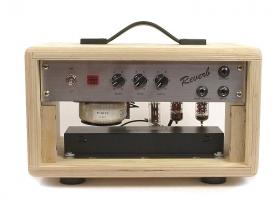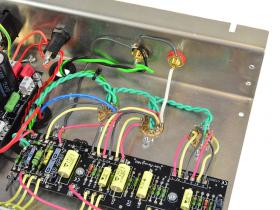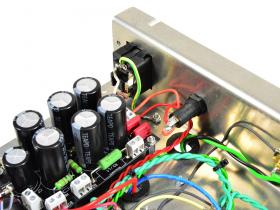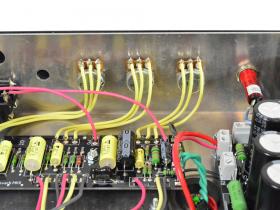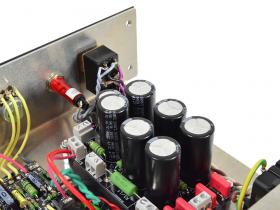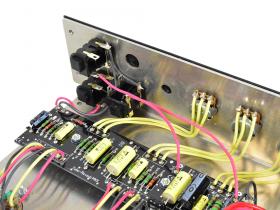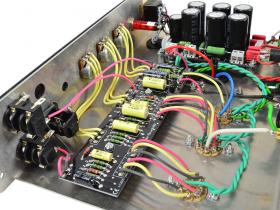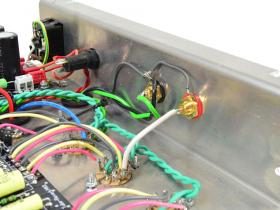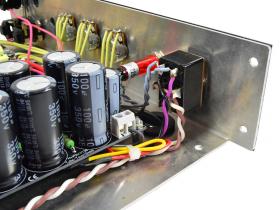
Tube-Reverb
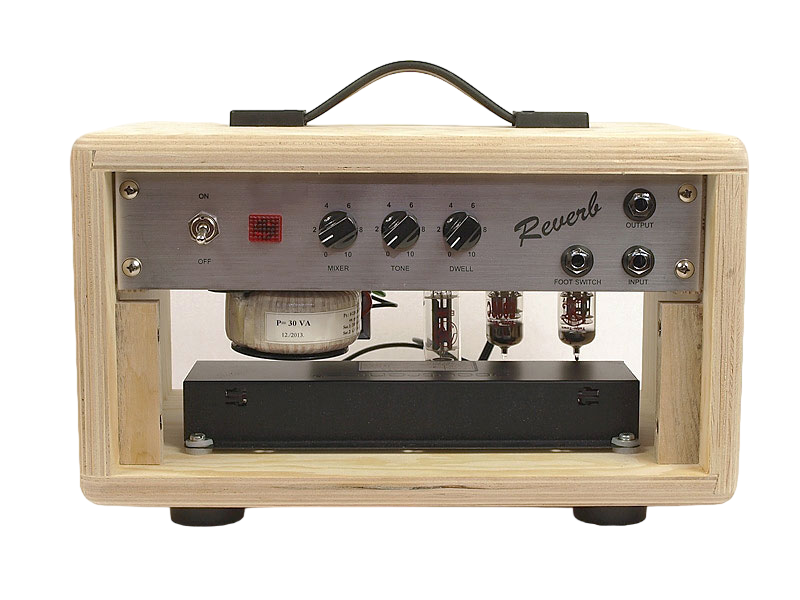
Tube-Reverb
There is no doubt, a reverb is one of the “Must-Have” effects for guitar. Many Musical Styles would not be thinkable without reverb and also in the studio or on stage a reverb is used very often, because it makes the sound much more alive. The Fender Reverb Unit 6G15, which was launched in 1961, is considered the pioneer in the field of reverb effects and is still a reference today. Surf sound without Fender Reverb Unit is not really possible.
The kit presented here is based on the Reissue-Circuit of the Reverb-Unit and represents a compact alternative to the bulky and expensive original Reverb Unit. The Tube-Reverb is not a stand-alone amplifier but is used between the guitar and the amplifier, or in the effect-loop of an amplifier, if one is available – just like a normal effect pedal.
To create the reverb, a real reverb tank is used and driven by real tubes. All analog, nothing digital.
The Fender Reverb Unit originally equipped with a 6K6, which was later replaced by a 6V6. In the TT Tube-Reverb, a JJ EL844 does the job and is used to drives the reverb tank. The “wet” branch uses a full 12AT7 to amplify the signal to the needed level. The recovery-stage, located after the reverb tank, uses one half of a 12AX7, while the second system of the 12AX7 is used in the “dry” branch. Finally, the two signal paths (Wet and Dry) are mixed together using the “Mixer” potentiometer. In front of this potentiometer, there is also a simple tone fader in the wet branch, which allows for slight corrections in bass and treble.
The Dwell potentiometer further forward in the signal-path is nothing else than a gain potentiometer and is used to adjust the gain in the preamplifier and thus also to adjust the sensitivity to the input signal. This is important, because the input stage of the TT Tube-Reverb acts like a real tube amp: if the level is too high, the stage overdrives – a behavior that you don't necessarily want to have with the reverb.
The effect is switched on and off via a footswitch. If you don't want to have an effect, the reverb signal is simply connected to ground.
That's it, so everything is quite simple and manageable. One more note about the reverb tanks themselves: In the original, a 4AB3C1B tank is used. In combination with the Reverb-Unit it produces a very long and deep reverb but due to its size it doesn't fit into the cabinets normally used for LoW kits, so this tank was replaced by a shorter tank. The 8AB3C1B corresponds to the 4AB3C1B tank used in the original and has a long and deep reverberation too, but is much shorter. The alternative tank to use is the 8AB2A1B, which has a shorter (medium) reverb and can be adjusted much more finely. Usefully if you do not need too much reverb and a less depth. So the choice is yours.
As with the other LoW kits, the Mini-PSU is used for the power supply. A machined chassis is also available, as well as a matching headshell in which both the amplifier unit and the reverb tank can be installed. Please note: the tube reverb is intended for hanging mounting.
The kit and other accessories are available in the TT-Shop
Files
Warning!
Caution is necessary. Even though this isn't a particularly powerful amp, it nevertheless works with voltages which are potentially lethal. This amp is NOT appropriate for beginners!
Reading and understanding schematics, use of measurement devices, and good experience with voltages over 60V are prerequisites for the successful completion of this project.

